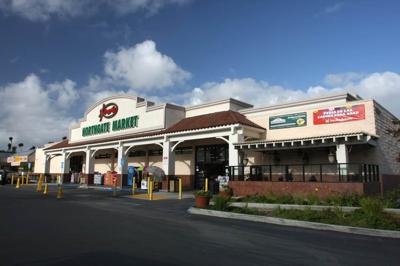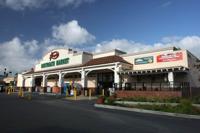
(Photo courtesy of Northgate Market)
Intense competition. Slim margins. Constant consolidation.
These themes have long defined the unforgiving world of U.S. food retail. National chains like Kroger and Albertsons have remained competitive by acquiring rivals and leveraging their scale to generate much-needed cost efficiencies.
At the same time, the U.S. has undergone a significant demographic shift: the immigrant population rose from 4.7% of the population in 1970 to nearly 16% in 2025. Demand for ethnic foods surged, yet immigrant communities continued to be ignored by mainstream retailers. It was local entrepreneurs, often immigrants themselves, who filled the void by opening bodegas, bakeries and meat markets, serving not just food but also familiarity, comfort and a sense of belonging.
California’s Latino grocery market is a prime example of how small family businesses have grown into large, successful enterprises driven by a community's desire for authentic cultural food offerings.
In the 1980s, three families from Jalisco, Mexico, pursuing the American Dream in Los Angeles, opened small grocery stores to serve fellow immigrants in their neighborhoods. They understood firsthand the yearning for a taste of home and they built businesses around that need. Through sacrifice, grit and intergenerational support, these stores evolved into three powerhouse chains: Northgate Gonzalez Market, Vallarta Supermarkets and Cardenas Markets.
They transformed the grocery experience for their customers with well-invested, large-format stores designed for Latino families, particularly Mexican Americans, who comprise 60% of the U.S. Latino population. Shoppers can find tortillerías pressing fresh masa, panaderías offering warm bolillos, carnicerías featuring specialty cuts of meat and aisles stocked with imported foods from across Latin America — all alongside the everyday staples of American households.
Together, these companies now operate over 160 locations, primarily in California. Northgate and Vallarta reportedly generate over $1.3 billion and $1.5 billion in sales, respectively — a testament to the vision of the founding families, who saw opportunities that sophisticated mega corporations missed.
But the key question for today’s immigrant family is: Can family businesses still compete in this new environment? Yes, but they need a new playbook, one grounded on three elements: customer loyalty, a growing geographic market and the right capital partner.
Build loyalty before expanding
Even the most underserved ethnic communities have more specialty grocery options than they did just 10 years ago. Without a strong following or pricing power, family businesses will struggle against larger competitors with cost advantages.
Family businesses should first focus on high-value niches — prepared foods, unique spices and baked goods — building loyalty before broadening their product lines. Once established, they can expand into staples or partner strategically with bigger stores.
A classic example in Mexican cuisine is mole, known for its laborious preparation, variety of ingredients and difficulty in mastering an optimal flavor profile. With many regional variants and the ability to sell the sauce itself or in the context of a prepared dish, mole is the type of specialty food that can garner a loyal customer base. Other items, such as pan dulce and tamales, present similar specialization opportunities.
Target high-growth markets
Decades ago, ethnic groceries were wide open. That has changed, particularly in the Latino category, with the emergence of developed Latin American supermarket chains in California, Texas and Florida. However, half of U.S. Latinos live elsewhere, in states where such specialty offerings are much less prevalent. And many of these regions are experiencing some of the fastest growth in Latino residents.
Between 2010 and 2020, states such as Pennsylvania, Virginia, Washington and North Carolina saw Latino populations rise by 40–46%, reaching about a million each. Various smaller hubs, including Tennessee, Maryland and Ohio, experienced even sharper growth.
Even within California, several counties experienced large increases in Latino populations during this period – Sacramento notched a 22% rise, while other northern counties saw growth of up to 40%.
These budding markets can offer the type of excess demand for Latino specialty foods that propelled pioneering founders to success in Southern California many years ago, creating fertile ground for new growth.
Establish trusted capital partnerships
With national chains and private equity firms eyeing increased investment in ethnic specialty food retail, family businesses with growth aspirations will need the support of well-funded equity capital partners. However, these businesses must choose their partners wisely.
Several markers can help identify ideal candidates:
- Willingness to invest for the long term: The path from inception to even just a handful of stores is a long, arduous journey. Investors should demonstrate the same commitment and resilience when transitioning to a new stage of growth.
- A shared mission: Capital providers should share the family’s goals, from employment practices to charitable commitments.
- Strategic alignment: Major strategic changes must be agreed on before a transaction closing, to ensure that new cultural and business practices are in line with the family’s values.
- Commitment to family succession: Families and investors should agree on a formal plan to educate the next generation to become future stewards of the business, who can preserve the legacy that the founders worked so hard to create.
Utilize programs aimed at supporting small businesses
Smaller businesses can benefit from government-backed programs that offer debt financing on favorable terms. Designed to provide capital for fixed assets like real estate, buildings and machinery, SBA 504 loans can be a very effective tool for retail businesses to fund new store openings, upgrades and renovations to existing stores, and even acquisitions.
With principal amounts of up to $5 million, 10% down payments, tenures of up to 25 years and fixed, below-market interest rates, many ethnic specialty grocers have utilized 504 loans to facilitate expansion.
The State of California, under the leadership of Gov. Gavin Newsom, continues to demonstrate its commitment to empowering immigrant-owned businesses. As part of the new state budget for the 2025-2026 fiscal year, Newsom approved another $7.5 million investment in the Social Entrepreneurs for Economic Development(SEED) program — one of the most successful small business development programs in California, providing entrepreneurship training, technical assistance and microgrants to immigrants.
The lesson
In the ethnic specialty grocery space, where success is heavily reliant on a deep cultural understanding of the customer and an unwavering commitment to the community, family-run businesses remain vital drivers of growth.
But now more than ever, they must prioritize building a loyal following early on, target geographies with emerging cultural hubs and establish trustworthy capital partnerships. By also leveraging family business-friendly financing programs, they can level the playing field to compete with national players and create the next generation of large-scale specialty grocers – following in the footsteps of pioneers like Northgate, Vallarta, and Cardenas.










(0) comments
Welcome to the discussion.
Log In
Keep it Clean. Please avoid obscene, vulgar, lewd, racist or sexually-oriented language.
PLEASE TURN OFF YOUR CAPS LOCK.
Don't Threaten. Threats of harming another person will not be tolerated.
Be Truthful. Don't knowingly lie about anyone or anything.
Be Nice. No racism, sexism or any sort of -ism that is degrading to another person.
Be Proactive. Use the 'Report' link on each comment to let us know of abusive posts.
Share with Us. We'd love to hear eyewitness accounts, the history behind an article.